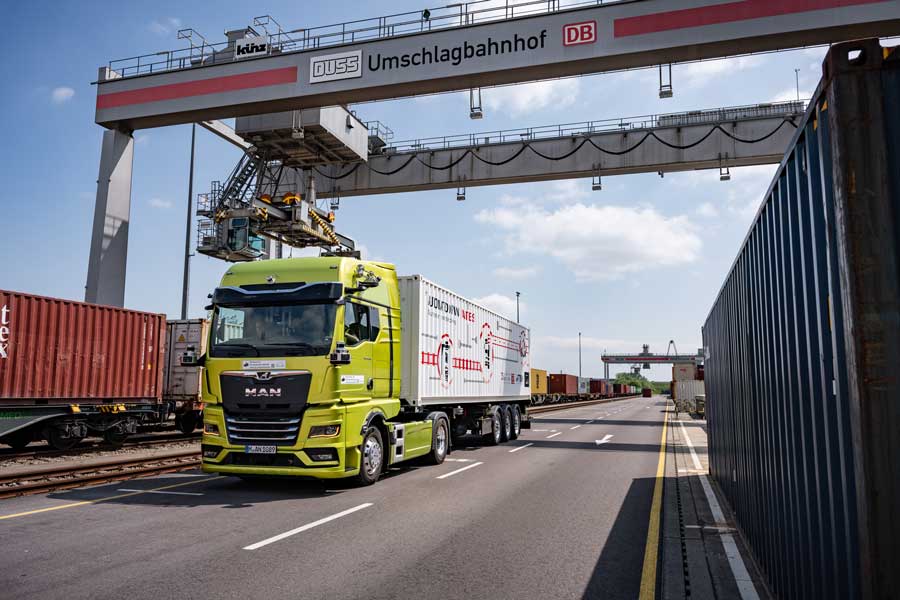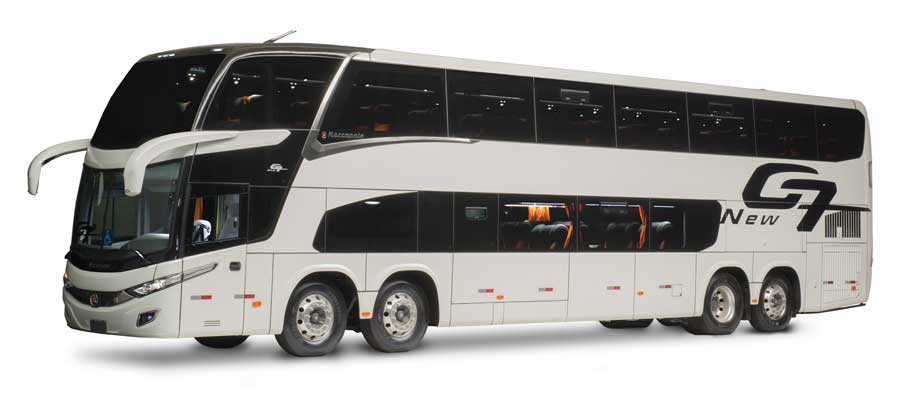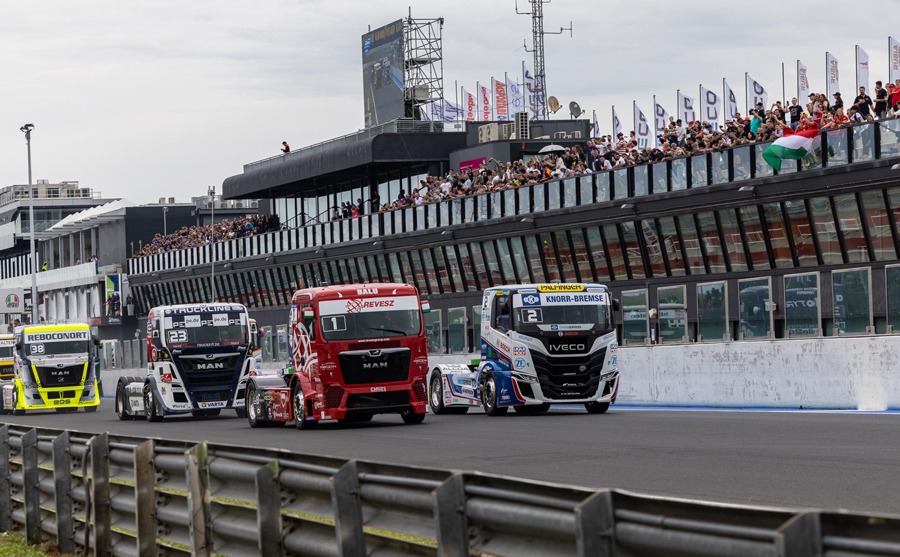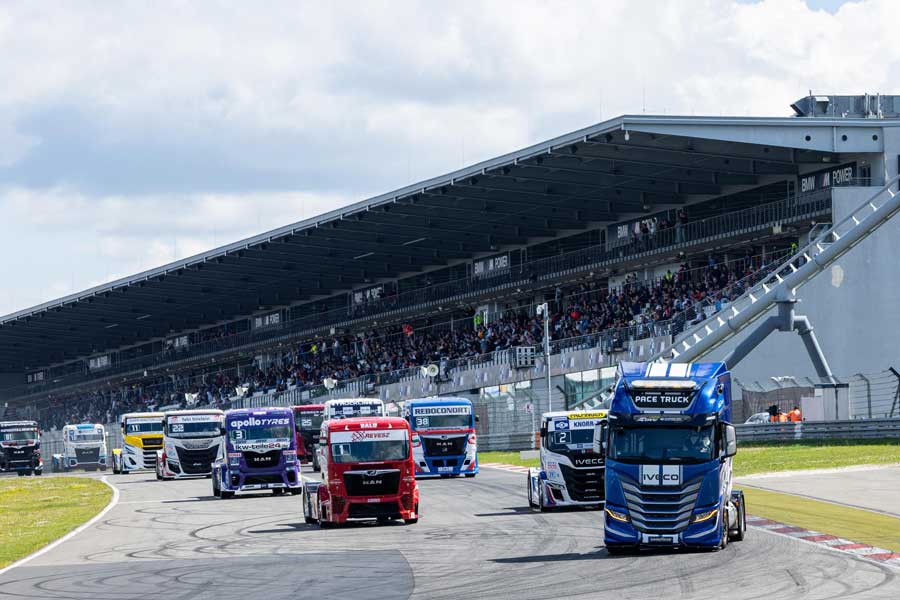MAN Truck & Bus, Deutsche Bahn, Hochschule Fresenius University of Applied Sciences and Götting KG have jointly achieved groundbreaking research results in the use of an autonomous truck in container logistics. As part of the research project “Autonomous Innovation in Terminal Operations” (ANITA), they successfully demonstrated how self-driving trucks with the appropriate integration into the infrastructure can make combined road and rail freight transport more efficient, more plannable, and at the same time more flexible in the future.
To this end, the project partners have put an autonomously driving truck on wheels that can independently handle container shipments from road to rail with the help of digital mission planning. The research project, funded by the German Federal Ministry of Economics and Climate Protection, ran for a total of three years, around six months of which the experts tested the vehicle in practical use at the DB Intermodal Services Container Depot and DUSS Container Terminal in Ulm.
“When developing autonomous driving systems, concrete logistics applications and customer benefits are our focus from the very beginning. That is why we at ANITA have not only worked on the development of automated driving in a container terminal, but at the same time, together with our partners, have pushed ahead with the digital integration of the technology into the logistics process. Only in this way will we be able to make meaningful use of the advantages of autonomous trucks in the future: the gain in safety, the greater flexibility – especially in view of the increasing shortage of drivers – the good combinability with other modes of transport and, of course, the optimum energy efficiency in operation, which will become particularly important in connection with electromobility. For MAN, ANITA is an important basis for putting autonomous trucks on the road as series solutions in transport operations between logistics hubs such as in Ulm from 2030 onwards,” says Dr. Frederik Zohm, Executive Board Member for Research & Development at MAN Truck & Bus.
The intensive test drives with safety drivers and development engineers not only provided comprehensive insights for the continuous refinement of the autonomous driving function and its interaction with mission planning, but also for the necessary preparation of the terminals for the integration of the new technology.
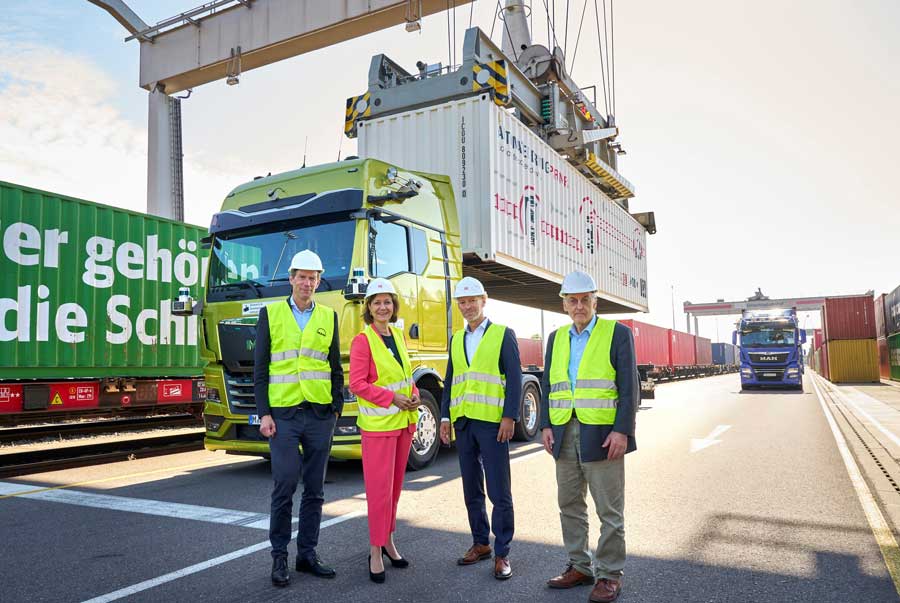
“Combined transport will continue to grow in the coming years and play an important role in shifting traffic to environmentally friendly rail. To achieve this, the complex processes in the terminals must be made more efficient and accelerated. This can only be achieved if we continue to automate and digitize logistics processes. The completion of the ANITA project today impressively demonstrated what the future could look like in the terminals. The autonomous truck works in real terminal operations and can thus make a decisive contribution to the future viability of combined transport,” says Dr. Martina Niemann, DB Cargo AG Board Member for Finance, Controlling and Supply Management.
In order for the autonomous truck of the ANITA project to be able to fulfill its transport task in container handling, it must be able to communicate with the infrastructure of the DB IS depot and the DUSS terminal. To this end, the scientists at Fresenius University of Applied Sciences analyzed the existing processes, procedures and behaviors of people and machines on site in the first phase of the project and transferred them into a digital set of rules. Deon Digital’s Contract Specification Language (CSL) serves as a common language for the clear and complete communication of all systems involved. The result is a complete mission planning system that links both the vehicle and the IT systems of DB IS-Depot and DUSS-Terminal.
Like a universal interpreter, the solution speaks the languages of all heterogeneous systems and guides the automated truck through the process of container handling, as Prof. Dr. Christian T. Haas, Director of the Institute for Complex Systems Research at Hochschule Fresenius University of Applied Sciences, explains: “We have here a communication-intensive multi-agent system, i.e. different actors such as truck drivers, crane operators, forklift drivers use different forms of communication such as speech, gestures, etc., and in the process transmit the information they classify as relevant. Since in autonomous transfers it is not the driver who ‘talks’ to the dispatcher, but the truck with databases or other machines, a digital communication system – i.e. one that machines can understand – had to be developed for the mission to work. This was a high development effort, but one that has now led to success and the corresponding productivity gains.“
Götting KG contributed its expertise in object location and environment detection to the project in addition to MAN to enable future transferability to other logistics hubs and expandability for additional deployment scenarios. “To make driverless vehicles even more attractive, we are continuing to work on safe obstacle detection for greater ranges and speeds,” says Hans-Heinrich Götting, Managing Director of Götting KG, at the conclusion of the ANITA project.
The detailed project results will be summarized in a detailed project report and published after the end of the project.


